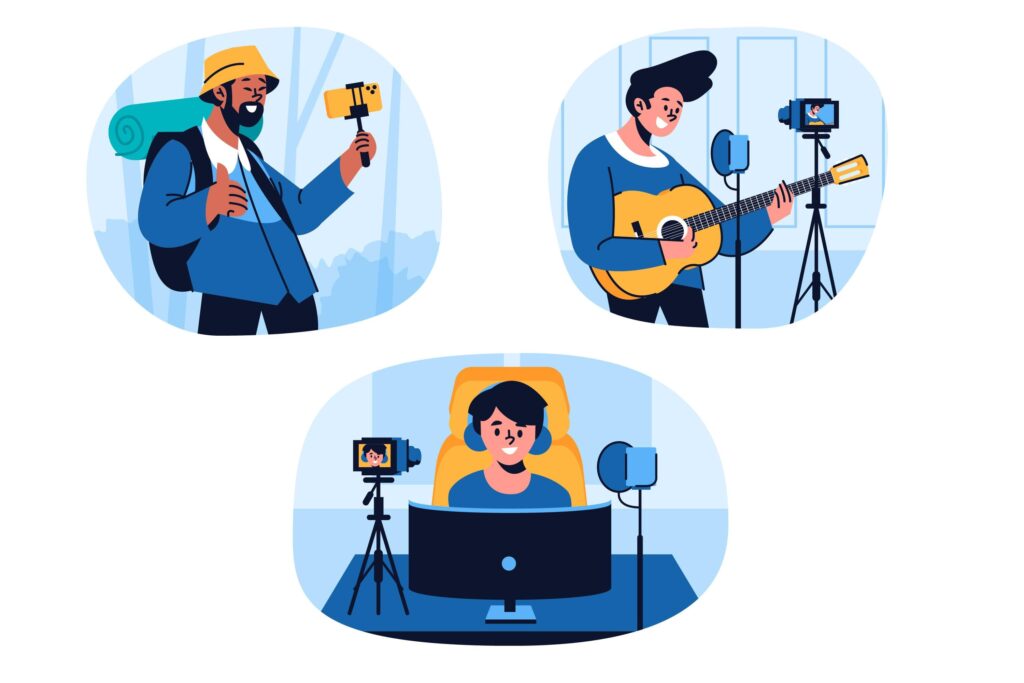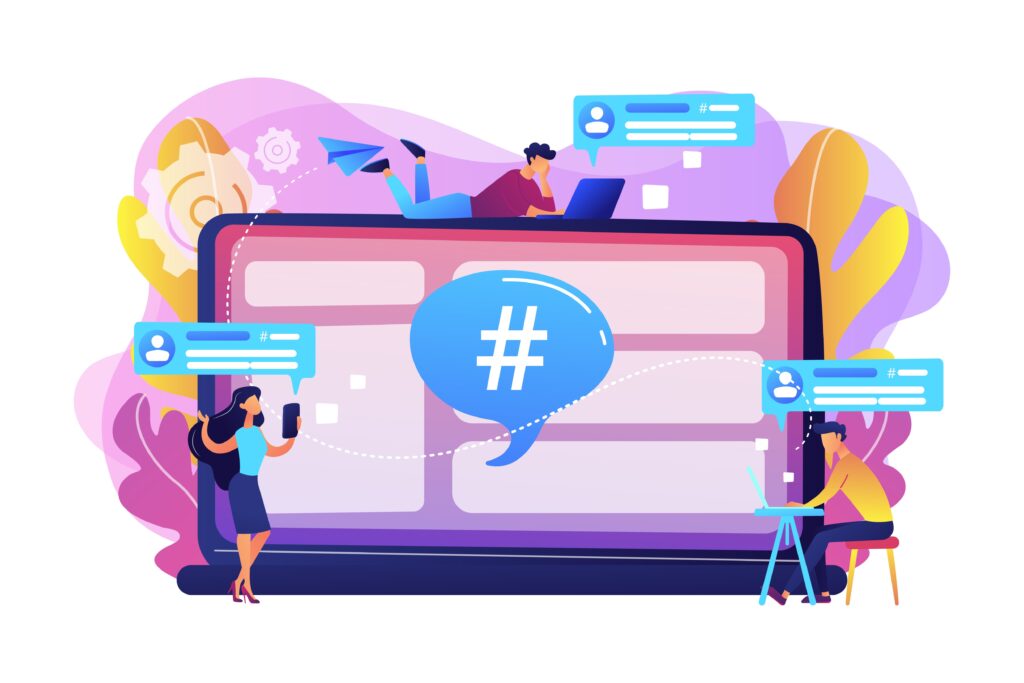Social Media Marketing Tips for 2023
As a business owner, you know the importance of having a strong online presence. It’s not enough to have an attractive website and a few great products — if you want to stay competitive, you need to consider how your brand looks on social media as well.
Social media marketing is a must-have in business today. It can help you grow your business and brand, reach a wider audience, build trust with your customers, and communicate with them directly. It is also cost-effective since it allows you to promote your products or services for free (or very little).
Below are some of our favorite tips for using social media marketing more effectively in 2019:
Content marketing

Social media marketing is about being social. It’s about connecting with your audience and building trust, credibility, and a relationship with them.
Content marketing is one of the best ways to do this because it helps you get more traffic to your website while also building your brand. Content marketing can include blog posts, infographics, ebooks, or even videos! You can use these things on social media as well as other platforms like YouTube or LinkedIn.
The best way to use social media as a marketing tool is by creating relevant, helpful, and valuable content. This can be anything from sharing your latest blog post or posting an infographic about something in your niche.
The easiest way to get started with content marketing is by creating a blog and posting regularly. You can also use social media to promote your blog posts, share your latest videos, or even talk about industry news in the comments of your posts.
PPC marketing

Pay-per-click (PPC) marketing is a form of online advertising that allows you to pay for your ad to appear on search engine results pages (SERPs) or social media platforms. PPC marketing allows you to target specific customers and reach them with a relevant message to their interests.
With this technique, as opposed to other forms of digital outreach like email newsletters or banner ads, businesses can build trust and credibility through their content. This method shows potential customers exactly what they’re getting into before they click through:
- What can I expect from this product?
- What problems will it solve?
- How does it compare with its competitors?
These questions inform the customer base about the benefits of using your product or service in order for them to feel confident in purchasing from you instead of another company that hasn’t put as much effort into educating their audience about what sets them apart from everyone else out there selling similar things at similar prices.
Video ads

You might be wondering, “Why should I go through the effort of creating video ads when I don’t have a lot to spend on them?” The answer is simple: they’re more likely to be viewed, shared, remembered, and effective.
And with today’s technology, it’s easier than ever to create professional-looking videos that captivate your audience.
You can create videos that are just as effective as those that cost thousands of dollars. And you don’t have to spend much money on equipment or software, either. All you need is a smartphone and the right tools for editing.
So, how do you create a video ad that will get noticed? Here are some tips:
Choose your topic wisely.
You have to know what you want to say before you start shooting.
Think about what makes your business unique and special.
What can you do for people that no one else can? Why should they care? What are the benefits of working with you over any other provider in your industry? Start with these questions and brainstorm ideas until you develop a message that will resonate with your audience.
Make sure your message is clear.
Your video should be concise but not so brief that it’s confusing. You want people to understand exactly what you’re offering them so they can decide whether or not they want to purchase from you. The best way to do this is with a clear call to action. Tell your audience what they should do next, and make it easy for them to do so by including an email address or phone number where they can contact you.
Create an engaging story. Create an engaging story.
You don’t have to be a professional videographer to create a compelling ad. Use your phone or webcam and try different angles and lighting until you find what works best for your brand. Try also using some interesting props or costumes if possible.
Include a call to action.
Your video should have a clear call to action, such as asking viewers to visit your website or click on an email address. You can also ask people to leave feedback or share their thoughts about your product or service.
Use an engaging soundtrack Music can make or break your video ad, so choose wisely!
You want to find something appropriate for your brand and audience but catchy enough to keep people watching.
Use high-quality images and videos.
You want your ad to look professional, so people trust you as an expert.
Promote your ad.
Promoting your video ad is just as important as creating one, so make sure you share it on social media and other platforms where people can find it.
Test, test, test.
Once you’ve created your ad, try running different versions to see which performs best. Try changing the copy or visuals and seeing how people respond to each variation.
Use the right call to action.
Depending on your goals and audience, you may want to ask people to do something different with each video ad. For example, if your goal is to get people to sign up for a trial of your product or service, then use an email address as the call to action in all your ads.
Chatbots

Chatbots are automated software that can answer customer questions and automate repetitive tasks. They are used to increase productivity and sell products and services, including
- Increase productivity by automating repetitive tasks
- Customer service agents (aka chatbots) take care of the boring stuff, so you don’t have to!
- Chatbots can be used as customer service agents to answer customer questions and solve problems, freeing your staff to focus on more important things.
Increase sales by selling products and services. Chatbots can sell products and services, such as booking a flight or hotel room. They can also be used to provide customers with product recommendations based on their preferences and needs.
Reduce costs by automating repetitive tasks. Chatbots can be programmed to handle simple tasks at a lower cost than hiring new staff members.
Voice Search Optimization

The Voice search optimization is the process of optimizing a website for voice search. Voice search optimization is important because it’s a growing trend, and improving your rankings in search engines can result in better exposure for your content.
In addition to landing higher on the results page, optimizing your content for voice searches will lead to more conversions from users who may have been searching by typing text into their phone but decide they want to get a “quick summary” instead.
Here are some tips that will help you optimize your content:
- Include relevant keywords in your content. Use conversational language that’s clear and easy to understand. For example, if you’re writing about a topic related to SEO, don’t use industry jargon or words that are too technical when possible.
- Use short sentences that are easy to digest. Keep paragraphs short and sweet, too. Keep your content brief and simple; don’t try to cram too much information into one page.
- Make sure that the content is easily digestible. Consider breaking it up into multiple pages if your article is longer than 500 words. Use headings and subheadings to break up the text. This will make it easier for users to quickly skim through your page and find what they’re looking for.
- Include images, videos, and graphs to add visual interest and break up the text.
- Make sure that your content is relevant and useful. Don’t just throw random keywords into your article just because they might be related to your writing; think about how readers will find this information useful and how it could impact their lives.
- Use the power of social media to get the word out about your blog. Share links on your Facebook page, Twitter feed, and Google+ profile to help spread the word about your content. Ensure you have a consistent brand image across all platforms so that readers know who wrote an article, even if they don’t see a byline.
Influencer marketing

Influencer marketing is a powerful and effective way to reach your target audience. It’s also one of the most challenging parts of digital marketing since it requires a delicate balance of finding the right influencers (who will share your content with their audiences) and convincing them to work with you in the first place.
There are several ways to find influencers:
- Use social media analytics tools like BuzzSumo or Followerwonk. These can help you identify popular content related to your brand or industry. From there, look for people who have shared similar content and reach out directly via email or direct message if possible (but be sure it’s appropriate!).
- Conduct keyword research and find specific communities where users discuss topics related to your products or services (e.g., “cooking tips”). Then join those communities by commenting on relevant threads until someone notices you—and then try connecting with them outside the platform!
If you are looking for advice on how best to approach working with an influencer, here are some tips from our experts:
- Make sure you’re looking for a partner, not just someone who will share your content with their audience. -Don’t be afraid to ask for help identifying influencers—many brands do this already! (And if you don’t know where to start, we can help!)
- Don’t expect influencers to cover all aspects of your product or service. Instead, focus on one specific feature or benefit that will resonate with your audience. -Make it easy for them! Influencers are busy people and don’t want extra work—so make sure to provide everything they need from their end (e.g., images, copy, etc.)
- Don’t forget to track the results of your influencer campaign! You can look at how many new followers each influencer has gained and compare this data with the cost of hiring them.
Influencer marketing works. It can help brands build relationships with customers far beyond their initial purchase. But for this strategy to be effective, brands need to think about what they’re trying to accomplish with influencers and how they can measure success.
Vertical Videos

Vertical videos are a great way to capture your audience’s attention in a short amount of time. They’re perfect for mobile, Instagram, Snapchat, and Facebook because they fill up the whole screen when viewed on these platforms. On YouTube, vertical videos can be watched by turning your phone sideways. And if you want to stand out on Twitter or other social media sites that haven’t caught on yet, vertical videos will get your message across quickly and effectively!
If you are looking to create a video that’s more than just a few seconds long, vertical videos are the way to go. Vertical videos can also be used to display ads on websites, and social media feeds where users scroll vertically instead of horizontally.
Live Videos and Streaming

Live videos and streaming are great ways to connect with your audience. They can share behind-the-scenes content, showcase products, and show off your expertise. Live videos allow you to engage in real-time conversations with fans, which helps build relationships with them.
Live video platforms like Facebook Live and Instagram Stories have made it easy for anyone to broadcast their content—and this is true for businesses as well. You can use live streaming on Facebook or Instagram to connect with new fans while allowing people to learn more about what they do!
Create a Custom Hashtag

Hashtags are a great way to organize content and engage with your audience. You can use hashtags to promote a new campaign, product, or service you’re introducing. Hashtags also help users find the content they may be interested in through search or by keeping up with the latest news from your brand’s social media channels.
Here are some tips for creating custom hashtags:
- Use a single-word hashtag (e.g., #socialmedia) or two words separated by an underscore (_example_). The latter option is better for longer phrases that someone might want to search for, like “summer fashion” or “best restaurants.”
- Make sure it’s easy to remember! If there are several words in your hashtag, consider adding punctuation, so people know where one-word stops and another begins (e.g., #SummerFashion). This way, you don’t have anything awkwardly spelled out, making it easier on everyone involved when they look back at previous posts.*
- Make sure your hashtag is unique. You don’t want to use one that already exists (even if your brand does not use it) because users might get confused—or worse, think you stole it!
Hashtags are a great way to get people involved in your social media marketing efforts. But if you are not using them correctly, they can hurt your business! If you want to learn more about hashtags and how they work, check out this guide from Hootsuite.
Offer Occasional Discounts and Promotions.

You can keep customers interested in your products by offering them discounts or special offers. You can use a coupon, promotion, or discount code to do this. Make sure that you are clear about the terms and conditions of the promotion (for example, if there is a limit on how many items can be bought at the discounted price). Also, ensure people know when the promotion ends so they don’t miss out on any good deals!
You can use your social media channels to promote your promotions. This is a great way to get the word out about your latest offer and encourage people to share it with their friends. You could also create a discount code that customers can enter at checkout and then share on their social media accounts to earn some free points or credits for themselves!
Share User-Generated Content.

User-generated content, or UGC, is when users of your product or service create content about it. It’s a great way for companies to get feedback from customers and potential customers and spread awareness about their brand and what they do in general. For example, if you are an online retailer selling shoes on social media platforms like Facebook and Instagram, you could ask followers to send photos of themselves wearing your products; then post those on social media yourself!
UGC is an excellent way to get customers involved and interested in your brand. It can also help you gather feedback on specific products or services, as well as see what kinds of things people like about your company.
UGC is also a great way to get people talking about your business, even if they’re not customers. For example, if you’re an online shoe store and post photos of people wearing your shoes on Facebook, some of those people may have friends who aren’t yet customers but are interested in what they do. Word-of-mouth advertising can be very powerful as it spreads from friend to friend, creating free buzz for your company!
Respond to Comments, Complaints, and Questions on Time.

Your social media feeds are filled with people looking for answers—and they’re not always going to be satisfied with your automated response. So when someone mentions you or has something negative to say about your brand, don’t hide behind a robot-generated message.
Instead, take the time to address their concerns head-on by responding directly through the platform (e.g., Facebook Messenger). While this may take extra seconds out of your day, it can make all the difference in how someone perceives your company and its customer service capabilities.
When responding to positive comments on social media platforms like Instagram or Facebook, always respond with gratitude—but don’t overdo it! If someone takes the time out of their day to express appreciation for something you’ve created or done as an organization/business owner/brand manager/etc., make sure that person knows that what they did mattered—even if there was nothing particularly special about it from their perspective (e.g., sharing something funny instead of posting about every meal you eat). A simple “thank you” will suffice here; anything beyond this might appear insincere.
Never buy followers.

Many companies sell you real, engaged, and relevant followers for your social media pages, but they are fake and will not help you grow your business. They look like real people because they use bots to create fake accounts that follow you and like your posts. These bots can also be used to leave comments on other people’s posts and even post content themselves, making it seem like there is a large interest in what you have to say or sell when there isn’t!
Don’t rely on likes or views either – these signals don’t represent engagement or potential customers, as well as actual sales, do (which we will talk about later). The Solution:
- Use social media to increase brand awareness.
- Use it to get potential customers to know you, your company, and what you offer.
- Create posts highlighting your products or services in a way that is interesting, funny, or informative (and don’t forget to include a link to your website).
We recommend posting at least once per day on each platform—more often if possible!
Include Important Hashtags in Your Bio.

In addition to making your business name more searchable, hashtags are a great way to reach new audiences. Hashtags help you connect with people interested in the same things as you and can help your business grow.
Because there are so many different types of hashtags, it’s important not just to use any hashtag that comes along. Using irrelevant hashtags may make it seem like you don’t know what you are doing or leave users confused about why they should follow your account at all.
Instead, choose hashtags that are relevant to your business or industry and stick with those when posting content so people can easily find out more about what you offer them if they’re interested in what it is that sets them apart from other businesses in the same area (or even ones across town).
Social Media Marketing Helps You Grow Your Business

A Social media marketing is a must-have for any business today and can help grow your business in powerful ways.
Social media can reach new customers and keep existing ones happy by providing them with information about your products or services. Social media can also help you build trust with your customers; if they see that other people are happy with what you offer, they will be more inclined to do business with you too!
Wrapping Up
Social media marketing is a must-have in business today. It’s an opportunity to reach new customers, build brand awareness and share your products with others. But it can also be overwhelming if you don’t know where to start or what tools work best for your company. We hope this guide has given you some helpful tips on making social media work for your business!
